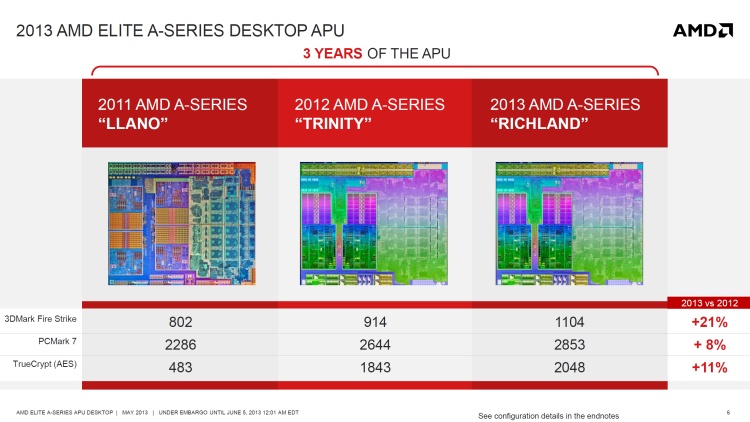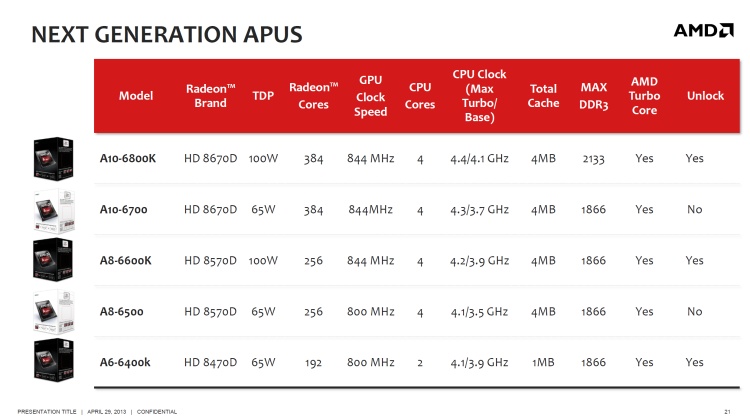Late last year we checked out AMD's desktop version of Trinity, comprising Piledriver CPU cores along with an on-die Radeon HD 7000 Series (not Graphics Core Next) graphics processor.
Headlining the family was the A10-5800K with four cores clocked at 3.80GHz, a 4MB L2 cache and the Radeon HD 7660D. This was one of four quad-core Trinity parts made available at launch, along with a pair of dual-core APU's known as the A6-5400K and A4-5300.
The A10-5800K debuted with an MSRP of just $130, pitting it at the time against the Core i3-3220. The end result was a typical Intel vs. AMD battle. While AMD had a clear cut advantage when it came to GPU performance, the CPU side of things was more closely contested.

In the end we concluded that Trinity, like Llano before it, was a bit soft when it came to processing horsepower, in spite of being a quad-core part. On the other hand its integrated graphics performance was unmatched.
Overall, Trinity picked up where Llano left off, providing an affordable package with enough processing speed for most users while supplying sufficient graphics muscle for most of today's PC games on modest settings.
Now, little over 6 months down the road, AMD is updating their product lineup with a minor refresh. Codenamed Richland, these new APUs offer no substantial changes to either the CPU or GPU. Other than some clock speed improvements, better power management, and a few new software features, everything is the same.

Therefore we won't go over every feature of the Richland architecture as it's much the same as Trinity. Instead, we will quickly introduce you to the new models before jumping into the benchmarks.
At the head of the table is the A10-6800K, which as you might have guessed, is stepping in to replace the A10-5800K. Both processors are identical with a few minor exceptions. The A10-6800K is clocked slightly higher at 4.10GHz as opposed to 3.80GHz, while the Turbo frequency has been boosted from 4.20GHz to 4.40GHz.
The Radeon HD 7660D has been replaced with the 8670D for the A10-6800K, offering a boost in operating clock speed from 800MHz to 844MHz. Other than that as far as we can tell the 8670D and 7660D are identical.

The A10-6700 steps in to replace the A10-5700 and again it's much the same story; the A10-6700 just enjoys a slight increase in frequency. There is also the A8-6600K and A8-6500, both quad-core parts featuring Radeon HD 8570D graphics, which is a new solution boasting 320 cores.
Lastly, the dual-core parts include the A6-6400K, A4-6300 and A4-4000. All of them feature just 1MB of L2 cache. The A6-6400K comes with Radeon HD 8470D graphics, while the A4-6300 uses the 8370D and the A4-4000 picks up the same 7480D graphics silicon used by the old A4-5300.
Today we'll take the flagship A10-6800K for a spin along with the bargain basement A4-4000 at the other end of the spectrum, which we suspect is going to be a slightly slower version of last year's A4-5300.
